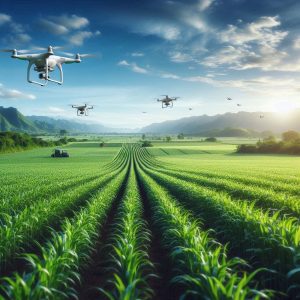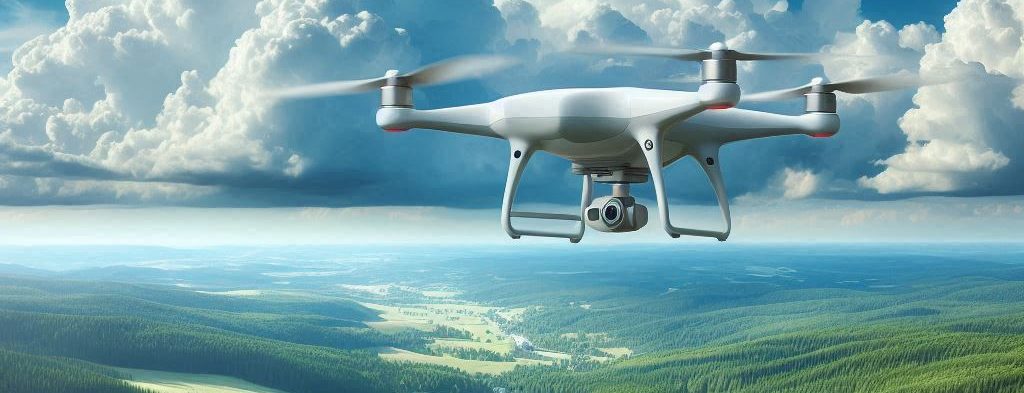Category: Agriculture
 Overview
Overview
The integration of drones in agriculture has revolutionized the way farmers manage their crops and livestock. Drones provide farmers with precise, real-time data and insights, enabling more efficient and sustainable agricultural practices. By using aerial drones, farmers can monitor crop health, assess field conditions, and optimize resource usage to enhance productivity and profitability.
Applications in Agriculture
1. Crop Monitoring and Health Assessment
- Field Scouting: Drones equipped with high-resolution cameras and multispectral sensors can capture detailed images of fields, identifying areas affected by pests, diseases, or nutrient deficiencies.
- Plant Health Analysis: Multispectral imagery allows farmers to assess plant health by analyzing vegetation indices such as NDVI (Normalized Difference Vegetation Index), helping in early detection of crop stress.
2. Precision Agriculture
- Variable Rate Application: Drones enable precise application of fertilizers, pesticides, and herbicides, ensuring that only the necessary amount is used, reducing waste and minimizing environmental impact.
- Irrigation Management: By providing detailed maps of soil moisture levels, drones help farmers optimize irrigation practices, ensuring that crops receive adequate water without over-irrigation.
3. Soil and Field Analysis
- Soil Mapping: Drones can generate 3D maps of fields, providing valuable information on soil type, topography, and field boundaries, which helps in planning planting and irrigation schedules.
- Field Condition Monitoring: Drones can monitor field conditions, such as soil erosion, drainage issues, and compaction, enabling timely interventions to improve soil health and crop yields.
4. Livestock Management
- Herd Monitoring: Drones equipped with thermal cameras can monitor livestock health and behavior, identifying sick or injured animals and tracking their movements across large pastures.
- Grazing Management: By providing aerial views of grazing patterns and pasture conditions, drones help farmers manage grazing more effectively, ensuring optimal use of available forage.
Advantages of Using Drones in Agriculture
- Time Efficiency: Drones can cover large areas quickly, providing timely data and insights that enable farmers to make informed decisions faster.
- Cost Savings: By optimizing resource usage and reducing input costs, drones help farmers save money and improve their bottom line.
- Sustainability: Drones promote sustainable farming practices by minimizing the use of chemicals, reducing water consumption, and preventing soil degradation.
- Data-Driven Decisions: Drones provide accurate, real-time data that allows farmers to make data-driven decisions, enhancing overall farm management and productivity.
Ethical and Legal Considerations
- Privacy and Data Security: Farmers must ensure that the data collected by drones is stored securely and used responsibly, respecting the privacy of neighboring properties.
- Regulatory Compliance: Farmers need to adhere to local regulations and obtain necessary permits for drone operations, ensuring safe and legal use of aerial drones.
Future Prospects
- Advanced Sensor Integration: Future drones will be equipped with advanced sensors, such as hyperspectral cameras and LiDAR, providing even more precise data and insights.
- Autonomous Drones: The development of autonomous drones will enable continuous monitoring of fields and livestock, further enhancing efficiency and productivity.
- Global Adoption: As drone technology becomes more accessible and affordable, its adoption in agriculture will continue to grow, benefiting farmers worldwide.

